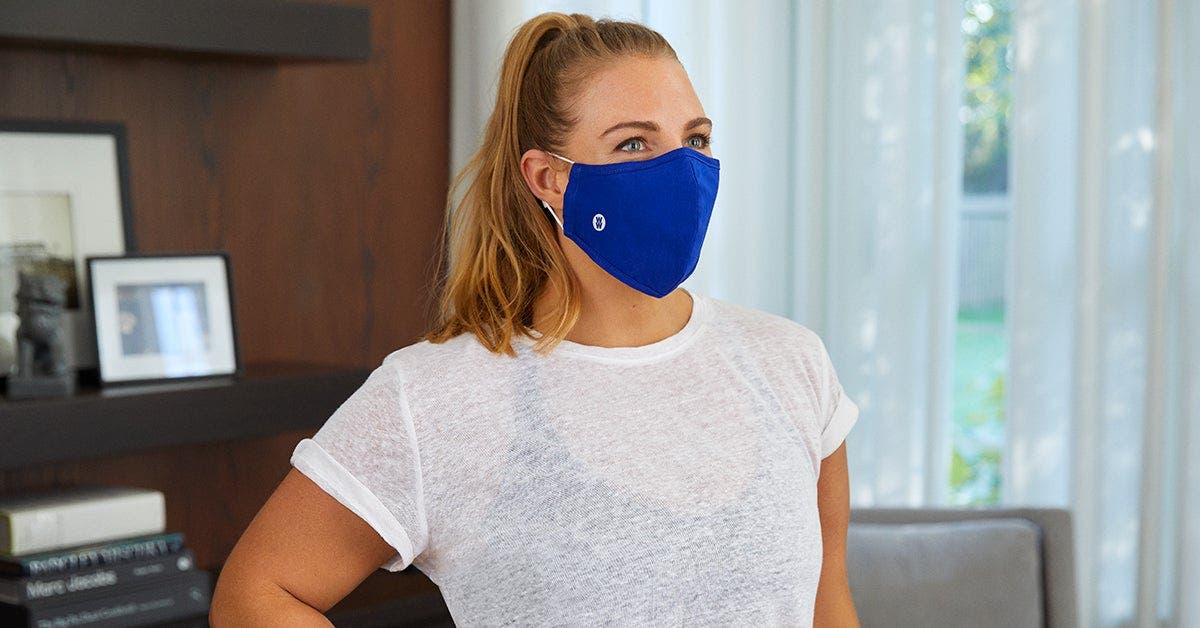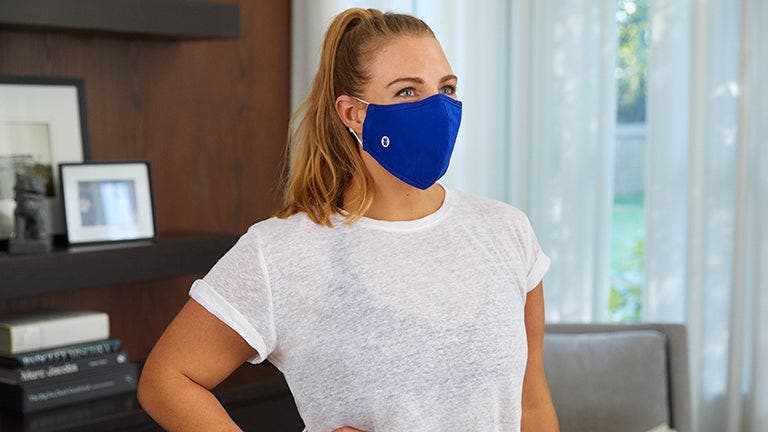The do’s and don’ts of exercising in a face mask


Since public health guidelines have reiterated the importance of wearing face coverings in preventing the spread of the novel coronavirus, face masks have been mandated throughout much of the U.S.
While some states enforce mask-wearing only indoors, others require it both indoors and outdoors whenever social distancing is not possible. The CDC takes a more conservative approach and recommends wearing a face covering in public and when you’re around people not in your household, in addition to practicing social distancing.
These rules are especially essential for exercisers, because heavy, fast-paced breathing can exacerbate the spread of the virus, says personal trainer and doctor of nutrition Roger E. Adams, PhD, CISSN.
“The higher the intensity of the exercise we’re performing, the harder and more forceful our breathing can become,” he says. “When we breathe out hard from exercise, a greater amount of droplets come from our nose and mouth and are dispelled a further distance.” One study from the Netherlands suggests that while six feet may be safe for two people standing around, it is not enough distance for two exercising people without masks.
So whether you’re returning to a newly-reopened gym or planning a bike ride with a friend, be sure to follow public health guidelines about mask-wearing. Although there’s no federal mandate in the U.S., there may be a local ordinance that requires you to wear a face covering while exercising. Read on to find out how you can stay safe as comfortably and efficiently as possible:
DO: Accept that you may be uncomfortable for a period of time.
Mask-wearing takes some getting used to, especially during activities that already leave you huffing and puffing. “It’s not fun, but it’s better than contracting COVID-19 or potentially spreading it to those around you,” notes certified strength and condition specialist Alex Tauberg, DC, CSCS. “A little bit of discomfort to protect fellow humans is worth it.”
Neither surgical nor cloth face masks restrict quality air from entering your lungs, according to the American Lung Association. Translation: They’re perfectly safe. “Mask-wearing may make breathing feel slightly more difficult, but once an individual gets used to it, their breathing patterns will adapt and it will no longer be so cumbersome,” adds Adams.
At first, scale back the intensity and duration of your workouts. Once you adjust to exercising in your mask, level them up. For example, you may want to start by walking or practicing a stretch routine, then work your way up to high-intensity interval training or cardio fitness classes.
DON’T: Exercise with a mask if you have underlying conditions.
Underlying conditions, such as cardiovascular or respiratory conditions, or asthma, can exacerbate breathing difficulties while wearing a mask, according to Tauberg. If you have (or are concerned that you have) one of these preexisting conditions, talk to your doctor before exercising with a face mask on. If necessary, work out at home or outside, away from others so that you can go mask-less.
DO: Follow guidelines when choosing a mask.
No matter what type of movement you’re planning to do, whether it’s jogging around the block or walking around the grocery store, you want to be sure you’re wearing the proper type of mask. Here are some things public health experts recommend you look for when shopping for a reusable mask:
- Fabric: Look for masks made of two (or more) layers of breathable, washable fabric like cotton. Skip anything made of a non-breathable material like vinyl or ones designed with vents.
- Fit: Ensure that the mask completely covers your nose and mouth, and fits snugly against your face—there shouldn’t be any gaps along the top or sides.
DO: Wear your mask properly.
Just because a mask is hanging across your face in some fashion doesn’t mean it’s protecting you and those around you from infection. “Wearing a mask that sits under your nose or in another unintended way helps no one,” Tauberg says.
Friendly reminder: The CDC recommends securing a clean, snug-fitting mask over your nose and mouth and under your chin.
DON’T: Set your mask down on a surface.
If you have to take your mask off to wipe your face or have a sip of water, keep it in your hand or pocket instead of setting it on a surface. Some studies, including one published in the New England Journal of Medicine, have discovered that the coronavirus can remain viable on surfaces for a period of days. However, infectious disease physician at the Johns Hopkins University Center for Health Security Amesh Adalja, MD, notes that surface transmission is much less likely. “It is a secondary means of getting the virus,” he says. If someone is high risk or simply overly concerned, he recommends that they bring a Ziploc bag with them so they don’t have to put their mask on any surfaces.
DO: Wash your mask after EVERY workout.
The CDC recommends washing cloth face masks after use—and this most certainly goes for exercising. “Just like with any other workout clothing, you should be conscientious about cleaning your mask after exercise,” Adams says. “Don’t keep a dirty one in your gym bag and wear it again. Instead, keep spare disposable masks in your bag just in case you forget to wash yours or need a back-up.” (In the market for a new reusable one to wear on wash days? Snag your own WW mask!)
DON’T: Pull your mask down to talk.
As necessary as it may feel in order to get through to your gym buddy over any loud music, don’t give in to the temptation to yank that mask down, even momentarily. “Pulling your mask down to speak is a major no-no and just invalidates wearing one,” Adams says. Keep it on—and ask others to do the same—while talking, even in outdoor environments.
Looking for more expert fitness tips? Check out The Vitamin Shoppe’s What’s Good blog.
--
Note: Public health recommendations concerning COVID-19 continue to evolve as researchers learn more about the virus and its effects. The information in this article might not reflect the latest guidelines. For up-to-date information on COVID-19, visit the CDC website.
--
This article was originally written by Jenn Sinrich for whatsgoodbyv.com and has been repurposed here with permission.
